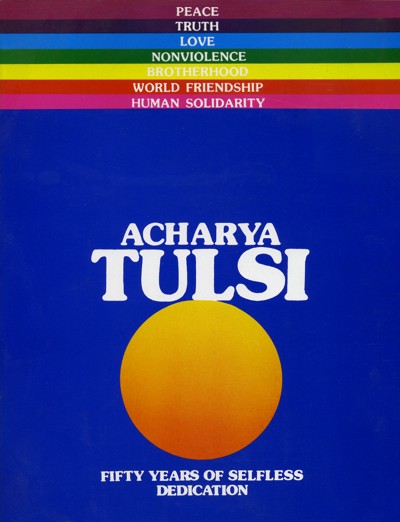Dr. Felipe Pardinas
Dean, Faculty of History and Arts Ibero Americana University
A humble salute from Mexico to Acharya Tulsi. I was deeply moved to get this opportunity to do homage to Acharyashri Tulsi. My desire is a very simple one: to add a voice from Mexico to the homage which so many scholars of the world will pay to this Indian Jain Priest, who has devoted his life to the cause of world peace.
Mexico is really a young country but perhaps not so young as many people believe.
Our history, or rather the biography of our people begins in the second millennium B.C., although our information is more clear about a religious centre in the valley of Mexico called Teotihuacan. Besides this centre, almost simultaneously, in about 600 years B.C. there were other two important centres: La Venta, today in the province of Tabasco and Monte Alban in the province of Oaxaca. Those three centres developed writing and calendar, this second feature to control time, not only weather, as was necessary in that predominantly agricultural civilization. Those large towns did not know wars or weapons. Those were peaceful times in which our people were dedicated to work, to praying to their gods, and to living peacefully.
The same can be said of the other centres now in the Republic of Guatemala, Tikal and Uuxactun, although these two ceremonial centres are of later development than the first-mentioned ones.
Unfortunately, the first destruction and the appearance of violence in our country was much before our contact with the West. At the end of this great epoch which we call the Classic, about 700 to 900 A.D., a very sudden and deep change took place among our people. An inner revolution and outside influences changed completely the face of those societies. We find the wonderful frescoes of Bonampak warriors and sacrificed men; those are the records of violence. Unfortunately, it seems that this new state of things was permanent at the arrival of the Westerners. When in 1519 Herman Cortes was able to conquer the central town of the Mexican culture, the great city of Tenochtitlan, the violence was to stay among those for a long time. Only during the last 25 or 30 years the country has known a new life of peace.
Now the interesting lesson is that many ideas of the old Indian civilization remain deep in the psychology of our people.
But for those who judge Mexico only from films and a certain literature it will be very difficult to believe that one of the characteristics of the psychology of our people is precisely to be peaceful and not violent.
But when you read a little more slowly not precisely, not our political history but our cultural history, it will be easier to find this love of nonviolence.
Therefore, I was very much interested in my last trip to India when through my friend Mr. Sunderlal Javeri I was able, with a group of students, to be informed about the Anuvrat Andolan and its main principles. It was on this trip that I heard not only about the wonderful work but also about the magnificent life of Acharyashree Tulsi.
When we came back to Mexico, we tried, through lectures, to inform other people about this movement and we found a very receptive enthusiasm when they heard about the principles of the movement.
Therefore, I am sure that the work of this great Indian Master is one of the strong influences in our modern world.
Against violence the only word and the only message is Love - love for men, love for life, love for happiness for everybody.
Therefore, let me tell you how much I desire that the voice of this great religious man be heard more deeply by the souls of many men who will cooperate in his efforts to make this world more humane and more peaceful.
